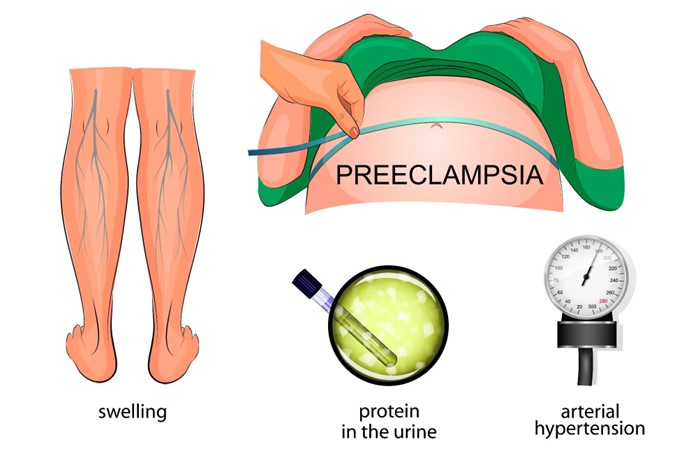When is it most important for the nurse to assess a pregnant client's deep tendon reflexes (DTRs)?
When the client has ankle edema.
If the client has an elevated blood pressure.
During admission to labor and delivery.
Within the first trimester of pregnancy.
The Correct Answer is B
Choice A reason: When the client has ankle edema, it is important for the nurse to assess for other signs of fluid retention, such as weight gain, jugular venous distension, and crackles in the lungs. However, ankle edema alone is not a specific indicator of preeclampsia or eclampsia, which are conditions that can cause hyperreflexia or increased DTRs.
Choice C reason: During admission to labor and delivery, it is important for the nurse to assess various aspects of the client's health status, such as vital signs, fetal heart rate, contractions, cervical dilation, and pain level. However, assessing DTRs is not a routine part of labor and delivery assessment unless there are signs of preeclampsia or eclampsia.
Choice D reason: Within the first trimester of pregnancy, it is important for the nurse to assess for signs of pregnancy-related nausea and vomiting, bleeding, infection, and ectopic pregnancy. However, assessing DTRs is not a routine part of first trimester assessment unless there are signs of neurological disorders or spinal cord injury.

Nursing Test Bank
Naxlex Comprehensive Predictor Exams
Related Questions
Correct Answer is ["30"]
Explanation
First, we need to find the concentration of insulin in the IV solution, which is the ratio of insulin units to saline volume. To do this, we use the given information that the IV solution contains 100 units in 250 ml. So, we divide 100 by 250 and get 0.4 units/ml.
Next, we need to calculate the infusion rate in ml/hour for the ordered dose of 12 units/hour. To do this, we use the ratio of insulin units to saline volume, which is 0.4 units/ml. So, we set up a proportion as follows:
0.4/1=12/x
To solve for x, we cross-multiply and get 0.4 x = 12. Then, we divide both sides by 0.4 and get x = 30. So, the infusion rate is 30 ml/hour.
Therefore, the nurse should program the infusion pump to deliver 30 ml/hour..
Correct Answer is C
Explanation
Choice A: Straining all urine is not a relevant instruction for the nurse to provide, as this is not related to prostatitis. This is a distractor choice.
Choice B: Maintaining contact isolation is not a necessary instruction for the nurse to provide, as prostatitis is not a contagious condition. This is another distractor choice.
Choice C: Avoiding urinary catheterization is an important instruction for the nurse to provide, as this can introduce bacteria into the urinary tract and worsen the infection. Therefore, this is the correct choice.
Choice D: Restricting oral fluid intake is not an appropriate instruction for the nurse to provide, as this can lead to dehydration and reduced urine output, which can increase the risk of urinary stasis and infection. This is another distractor choice.
Whether you are a student looking to ace your exams or a practicing nurse seeking to enhance your expertise , our nursing education contents will empower you with the confidence and competence to make a difference in the lives of patients and become a respected leader in the healthcare field.
Visit Naxlex, invest in your future and unlock endless possibilities with our unparalleled nursing education contents today
Report Wrong Answer on the Current Question
Do you disagree with the answer? If yes, what is your expected answer? Explain.
Kindly be descriptive with the issue you are facing.
